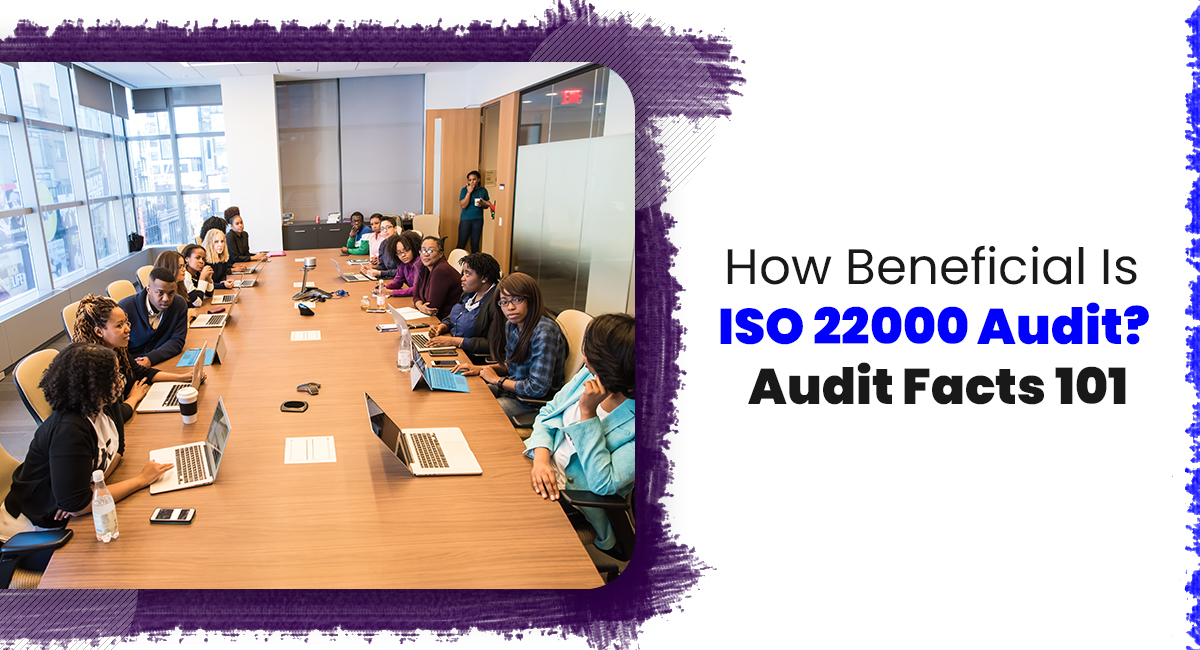QIC Global and Bluewolf operate as a single entity.
QIC Global and Bluewolf operate as a single entity.

As a food safety management standard, ISO 22000 is globally recognized for setting ideal requirements and relevant procedures. The increasing competition in the food chain industry pushes the quality and safety boundaries every day. Supporting an international safety management system is more than just a set of guidelines. From basic safety barriers to increasing customers to establishing a competitive edge, ISO 22000 is an all-inclusive program for sustainability.
The implementation procedure is rather rigorous and often exhausting. It starts with acquiring a basic understanding of the safety requirements, then moves on with gap analysis, gap filling, audits, and reviews subsequently. The ISO 22000 audit is one of the crucial elements of the process that determines the efficacy rate of the system.
As a system goes through different inspections and modifications, an internal audit is necessary to evaluate the financial outcome as well. It is a process that is incomplete without stakeholder engagement. The inclusive nature of the program is often overlooked. The following post has discussed the beneficial aspect of the audit in brief.
It is an objective-driven and independent analysis, which helps to add value to the operations and increase the efficiency level of the system. It is categorically divided into four types –
• Compliance Audit
• Information Technology audits
• Operational audits
• Financial audit
For ISO 22000, mainly compliance audit type is considered. The focus of this category is checking whether the system successfully complies with the regulatory conditions of the standard or not. The fundamental elements of ISO 22000 include the following –
• System management
• Leadership
• Interactive communication
• Critical control point (HACCP)
• Principles of hazard analysis
• Prerequisite programs
To accomplish each of the aforementioned elements, a company needs to acquire the right resources, mobilize them properly through robust planning, and monitor the progress followed by improvement. The overall program is generally streamlined with the help of certified ISO consultants who have same-industry experience and global knowledge. Understandably, the audit program is the key to measuring whether modification and implementation through hazard analysis prove fruitful or not. The significant benefits are –
• Cost efficiency – One of the fundamental aims of ISO 22000 is improving food quality with increased safety measures. It automatically reduces the amount of daily waste caused by inappropriate techniques of manufacturing and reserving perishable items. The audit helps to check if the major object is accomplished. Inspecting the system, interviewing employees, and allowing for further improvement, helps a company to save a substantial amount of money.
• Time-saving – By reducing the chances of producing wastage, the audit process helps the stakeholders to save time as well. As the process needs opinions from both management and employees, it augments the recovery process. Often, small and medium-sized companies do not consider including stakeholders in the decision-making process. After encountering repeated losses, once in a while team meeting is arranged. That eats time and leaves no solution. The internal audit is the easiest procedure for saving time by allowing each department to share valuable feedback. Decisions are taken easily and fast with multiple suggestions and perspectives.
• Document validation – It is necessary to establish an effective food safety management system. Through the audit, reports are submitted and evaluated. Professional auditors perform analyses and engage the management in documenting everything. Document validation is necessary to organize future meetings and build contingency plans as well.
• Policy development – The common reason for conducting an internal audit is probably because it helps to determine the best policies for increasing safety boundaries. Stakeholders and other interested parties get a better view regarding the ISO 22000 clauses and comprehend what is required to be done for damage control. Through a detailed risk management, top authorities decide on strategies, resources, and leadership so that disruptive events can be promptly avoided.
The audit, therefore, has a wholesome approach that promotes organizational sustainability. Professional conduct is necessary as the analyses and reviews are critical in form. Investing time in searching for expert auditors is essential.
Final words
To design an effective ISO 22000 audit checklist or to clear your fundamental grounds, hire expert consultants from Blue Wolf Certifications. It is India’s premium ISO consultancy website providing customer-friendly audit solutions for easy certification. To get comprehensive guidance for the quality management auidts, contact here now!